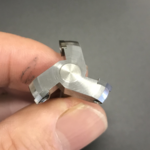cbrshadow23
Shohin
I've been doing some carving on my Bougainvillea's and have been using a dremel (1/8" shank) and some of the Dremel branded bits. Their bits seem good for the first 5 minutes, then they're dull and don't work well. I carved away some big areas of my bougainvillea and it took 2 hours and required a lot of effort on my end, plus I went through 2 bits. I'm sure the bits that I'm using aren't great for removing so much wood.
What bit would you recommend to use with my dremel? I have other bougainvilleas that will need a fair amount of wood removal and don't want to use those dremel branded bits anymore.
Thanks
What bit would you recommend to use with my dremel? I have other bougainvilleas that will need a fair amount of wood removal and don't want to use those dremel branded bits anymore.
Thanks


